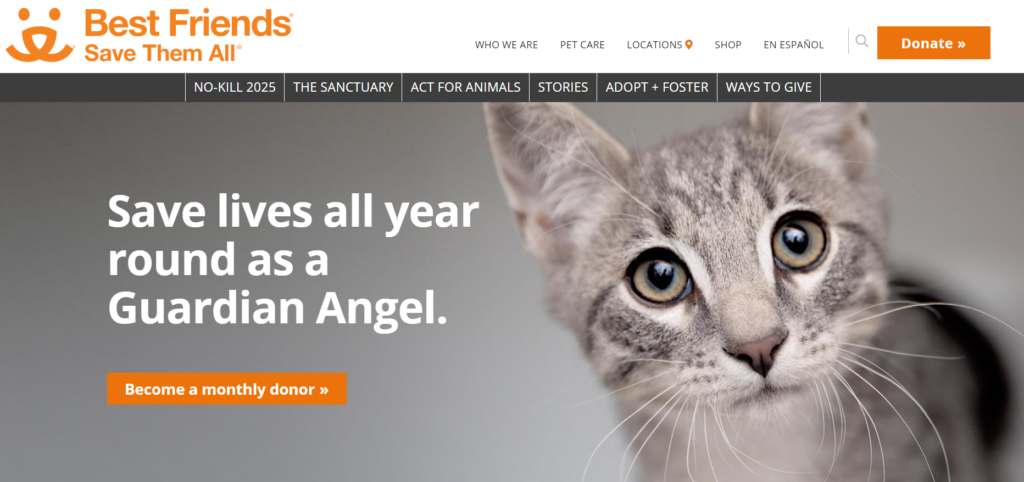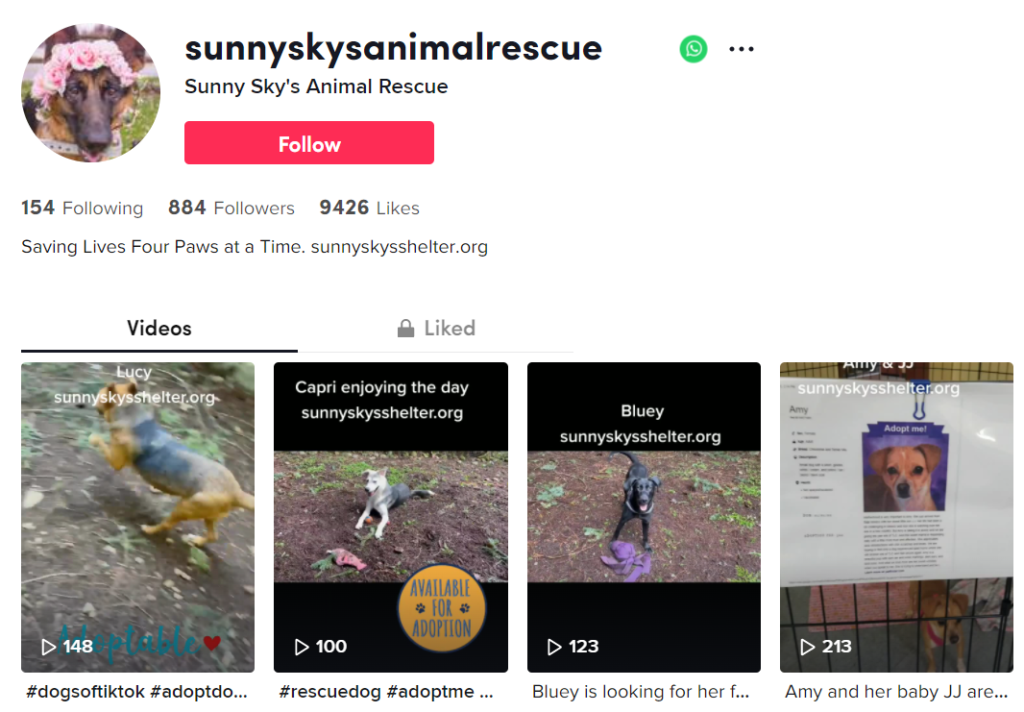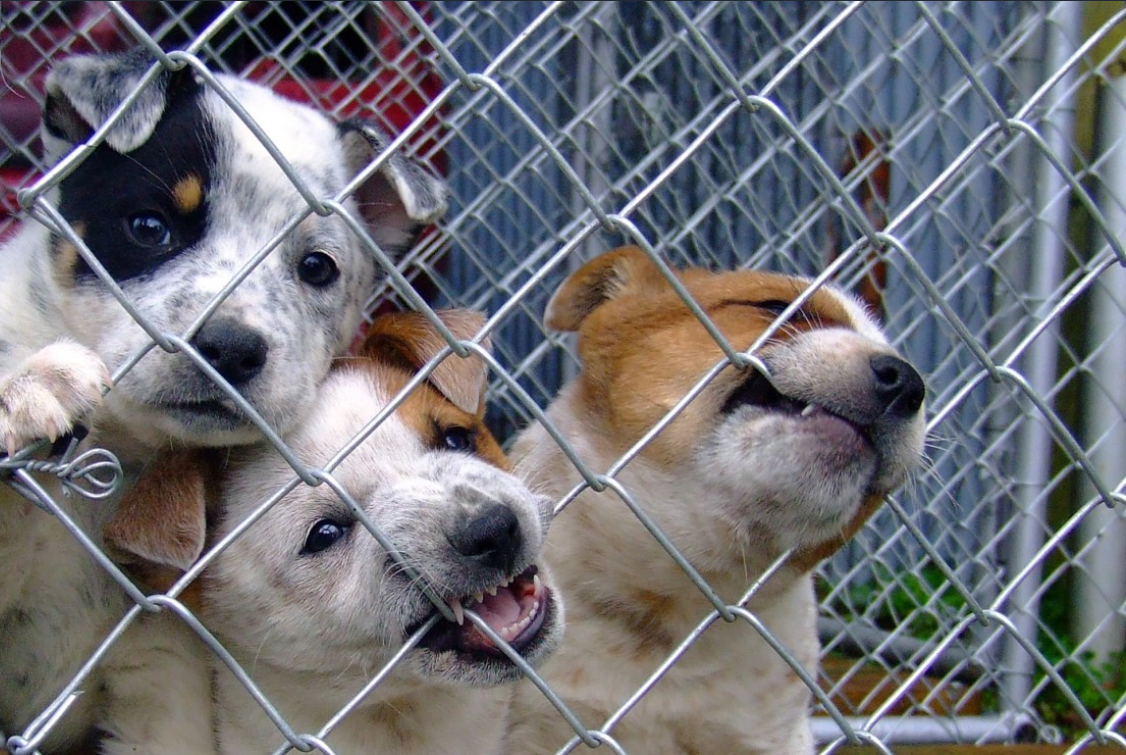Abstract
From the beginning days of human history, people have involved themselves in charitable efforts and collaborated to help others in need. Since the invention of the internet, people have used it to connect and share ideas with each other. And in the modern day, one way that the internet is being used is to spread word about and gain support for nonprofit organizations. We analyze how ten nonprofits present themselves online. We compare the online presentation of five national nonprofits (large, influential, “successful” organizations) with five local nonprofits (small organizations with less reach and influence). While it is difficult to quantify the meaning of “success”, we will consider the national nonprofit organizations as the goal to strive for and compare their use of the internet with the local nonprofits. As this is an introductory look, we stay on the homepage of the nonprofits’ websites. After analysis of their website homepages and use of several major social media outlets, it was found that the national nonprofits, who may be considered more “successful”, used more certain keywords and photos on their websites and used more social media outlets than the local nonprofits, which can be considered to have less “success”. Correlation does not equal causation, but it is recommended for the smaller local nonprofits to analyze what the large national nonprofits are doing that made them become such leading, wide-reaching programs.
Introduction
Every aspect of our lives seems to be shifting towards an online format. The creation of huge information databases, the introduction of instantaneous virtual communication, and the change in how we involve ourselves in our society, this shift involves almost every person, country, organization, movement, and belief. One specific aspect of living in a world connected so strongly in a virtual format is how nonprofit organizations reach the communities who may support them. Donating to charity has been on many people’s minds recently; nonprofits received an uptick in support during the COVID crisis, as shown by the fact that “the nation’s top 100 charities reported a 10% increase in private donations during their most recently reported fiscal years” (Barrett, 2021, p. 1). Five out of the top 100 charities in 2021 were categorized as Environment/Animal charities, which are the type of charities we will examine.

Figure 1 Working with animals provides emotional benefits to many people. (“Volunteers playing with the dog” by M. Nilov)
Pet ownership is important to many people, and they may want to help animals like those who enrich their lives. While potentially causing stress in unusual situations such as a pandemic (Phillipou et al., 2021), owning a pet has been shown in multiple studies to encourage life satisfaction (Bao et al., 2016) and reduce feelings of loneliness (Stanley et al., 2014). We will look at how pet-focused nonprofits present themselves online and advertise their message and intent.
Background
Charity work has long been a part of society. Long before the invention of the internet, people were advocating for charitable causes and raising money for those in need. In older times, people in need would turn to religious organizations for charitable assistance. “Religious organizations in the western world historically have been the major source of both funds and services for social welfare” (Wethues, 1971, p. 60). While religious organizations such as the Catholic Church continue to be involved in charitable work, governmental welfare programs and nonprofits (registered as 501(c)(3) organizations in the United States) are big on the scene in the modern era. A great deal more has changed in the last century than just who is providing charitable assistance. Religious organizations raise money for charitable causes from those in their congregation, and government assistance is generated largely through tax revenue, but what about nonprofits? Without a set group of people dedicated to supporting them, like a church, or legally required contributions, like the government, nonprofits need to reach out on their own to gain the support they need.
Though currently much of the world’s communication, including advertising, is focused online, there are many other methods of advertising that nonprofits can and have utilized. Nonprofits have worked to spread support for their causes in person, through print, by word-of-mouth, and on television. No matter the type of media, the presentation of the message is crucial. And the presentation must be tailored to the people that the nonprofit is trying to reach.
There really isn’t such a thing as the “general public”, as people are so diverse that lumping everyone together doesn’t make sense from an advertising perspective. The wording and physical presentation of the message needs to be tailored to the specific audience that the organization is trying to connect with. It is helpful to identify the specific publics that the nonprofit is trying to reach. This is usually very similar across pet-focused nonprofits: in general, the goal is to reach and connect with people who care about pet animals and who are willing and able to donate money or time to the cause. Getting as specific as possible helps focus the argument so that it can become more persuasive for the particular people being addressed. We will look at how actual nonprofits are presenting themselves online. First, we will look at how they organize the home pages of their websites, and then take a brief look at which nonprofits regularly use common social media platforms.
Social Media and Social Change
It has been acknowledged that social media can have many drawbacks for individuals on a personal level (TED, 2017), but there are people who support social media for its potential to help nonprofits and their causes. Some people argue for social media’s capacity to have a positive influence, saying that it offers “a venue for activism and social movements” (Auxier, 2020, p.1). Social media does provide a handy way for people to communicate easily about topics and ideas, and to meet up and become involved in community events.
However, awareness of an issue or cause is a separate matter from putting in time or providing monetary support that helps that cause. Using online “likes”, social media posts, and hashtags to promote a cause without doing anything “in real life” to support the said cause referred to as “slacktivism” (Muslic, 2017). Not all online activism is slacktivism. It is good to be aware, though, of the difference between directly benefitting a cause versus solely talking about it on social media.
Social media is not intended to be a means to fundraise. Of course, fundraising can be done on social media platforms, sometimes extremely successfully. YouTube hosts live charity streams, and Facebook provides fundraising tools for nonprofits. But anyone who uses the internet benefits from keeping in mind that the platform isn’t doing the fundraising. It’s the people invested in the cause, interacting on that platform, who are deciding to participate.
Many “awareness” campaigns for various causes are started out of good faith, but “someone who “likes” a cause on Facebook wouldn’t be any more likely to donate in the future than someone who had no exposure to the cause at all” (St. Louis Public Radio, 2014, p.1). This does not mean that there is no hope for social change through social media; they can help show other people in your personal network what you care about. Sharing what you are personally passionate about may be more likely to result in interest from those close to you than if they were reading about a cause that a stranger is talking about.
Study of Website Design

Figure 2 A screenshot of the top banner of Best Friends Animal Society’s home page includes two donation buttons and links on the navigation bar that suggest ways that people can contribute (Best Friends, 2022) (https://bestfriends.org/)
We will examine ten different pet nonprofits. Five are local to the general area around the University of Washington in Tacoma, and five are involved in animal rescue across the country. The names will be listed with their common acronyms in parenthesis if applicable. The five local nonprofits are Cascade Animal Protection Society (CAPS), Dog Rescue Around Washington (DRAW), Hello Pitty Rescue, Sunny Sky’s Animal Rescue (SSAR), and The Humane Society for Tacoma & Pierce County (THS); the five national nonprofits are American Humane, American Society for the Prevention of Cruelty to Animals (ASPCA), Best Friends Animal Society (BFAS), People for the Ethical Treatment of Animals (PETA), and Petsmart Charities.
Note on Sample Size
As we are looking in-depth at only a small number of websites, it is good to keep in mind the potential problems of getting information from small sample sizes. Small data sets can feed into cherry-picking of results, so large sample sizes are almost essential to avoid skewed data. With a large data set, it is more difficult for researchers to lean towards the data they prefer, intentionally or not, and the data is more representative in the first place. “Focusing on those less-representative portions might misrepresent or overshadow the aspects of the data that are prominent or meaningful, which could create ethical problems for your study” (Denny et al., 2021, p. 98). Misrepresenting data towards a certain side is unethical because it goes against the basic philosophy of science, which is the discovery of the truth of things.
All this being said, information from small primary sources can hold great value. It is not reasonably feasible to interview every expert in the world, or examine every website in existence, but that does not necessarily mean that the information gathered does not have significance. Data from a primary source is direct and (hopefully) undistorted. A single interview with an expert or an examination of a few websites can give a snapshot of what the “big picture” looks like. That is what we are doing in our analysis of these ten nonprofits: examining how some nonprofits present themselves to get an idea of how most nonprofits do so.
Analysis
In the modern digital era, websites serve as the face of a company. They are often the first place that people go to find out information on a cause. Here we analyze how pet-focused charities present themselves online by looking at the home pages of their websites. It has been shown that nonprofits who are able to relate to their target audiences more effectively in an online format are more likely to receive greater financial assistance (Levine et al., 2012). Charitable donations are the backbone of a nonprofit; thus, the presence of donation requests is a focus. Also, being pet-focused charities, the prominence of animal imagery is almost essential.
The aspects being analyzed are:
- How often the words “donate”, “donor”, “donation”, and “support” are used
- How prominent donation/support buttons are
- Number of photos of animals shown
Below is a table displaying the data acquired from our analysis. This information represents data collected from the homepages of our ten selected nonprofits. Note that this data is as of February 28, 2022 and may change at later dates depending on when these organizations update their websites.
Table 1
Analysis of the website homepages of the ten selected nonprofits
| Name of Nonprofit (URL of website) | Number of times the words “Donate”, etc. are used | Location of “donate” links on home page | Number of animal photos on home page |
| Local | |||
| Cascade Animal Protection Society (https://www.myrescuesite.org/caps/) | 0 | none | 4 |
| Dog Rescue Around Washington (https://www.drawrescue.com/) | 1 | none | 3 |
| Hello Pitty Rescue (https://www.hellopittyrescue.com/) | 2 | Navigation menu | 2 |
| Sunny Sky’s Animal Rescue https://www.sunnyskysshelter.org/) | 13 | Navigation menu | 6 |
| The Humane Society for Tacoma & Pierce County (https://www.thehumanesociety.org/) | 3 | Top right on navigation menu | 10 |
| National | |||
| American Humane (https://www.americanhumane.org/) | 2 | Top right next to navigation menu | 10 |
| American Society for the Prevention of Cruelty to Animals (https://www.aspca.org/) | 5 | Top right; on middle scrolling banner; middle banner; bottom of page | 9 |
| Best Friends Animal Society (https://bestfriends.org/) | 5 | Top right corner; left side of top banner; center of middle banner | 22 |
| People for the Ethical Treatment of Animals (https://www.peta.org/) | 7 | Navigation menu | 42 |
| Petsmart Charities (https://petsmartcharities.org/) | 8 | Navigation menu; bottom of page | 9 |
Overall, the first thing of note is that the national nonprofits had a greater amount of all three aspects: use of keywords donate/donor/donation/support, number of donation links/buttons; and number of animal photos used on their home pages. There was no discernable link between the three aspects being examined. More nonprofits had multiple donation links/buttons on their home page than I personally initially expected to see. There was great variety among the use of photos, though the national charities tended towards using more photos on their home pages than the local charities.
Brief Look at the Use of Other Social Media Channels
While the website is the face of an organization, a great deal of communication is done through other social media channels. Here we look at which rescues whose websites we looked at use the social media platforms of Facebook, TikTok, Instagram, and Twitter. We define regular use of a platform as posting new content approximately once a month at the least.

Figure 3 TikTok page of Sunny Sky’s Animal Rescue gives an example of how an animal-based nonprofit can present themselves on social media- a link to their own website and lots of cute dog videos! (Sunny Sky’s Animal Rescue, 2022) (https://www.tiktok.com/@sunnyskysanimalrescue?lang=en)
Eight of the ten rescues regularly maintain a profile on Facebook. Five of ten used TikTok regularly, with a mixture of both local and national nonprofits being represented. All but one nonprofit use Instagram with at least some regularity. All five national nonprofits are active on Twitter, while only one of the five local nonprofits, The Humane Society for Tacoma & Pierce County (@TacomaHumane), is active on this platform.
It was interesting to discover that Cascade Animal Protection Society does not maintain a profile on any of the social media platforms we examined. They have their own website and are present in the community, such as hosting adoption events at local pet stores, but do not maintain a strong online presence. Also, in three instances, a nonprofit had an account on the social media platform but did not use it regularly or had zero posts.
The national nonprofits utilize mainstream social media channels approximately 40% more than the local nonprofits. It is difficult to discern at a surface level examination if it’s because they reach out so much that they became large organizations, or if they reach out a lot because they are large organizations, but here we are focused on examining the difference between the online presentation of national versus local nonprofits. Many people enjoy supporting any size of nonprofit through social media. Some people simply like to talk about what they care about. Also, showing public support for a nonprofit demonstrates to the people in their online circles that they care about others and have the resources, such as money, to support those in need (Levine 2012). It was a little surprising the number of occurrences where a nonprofit didn’t have an active profile on a mainstream social media platform. Both these instances and the occasions where the nonprofit has a profile, but doesn’t use it, show an easily ready opportunity to reach more people.
Conclusion and Final Thoughts
All in all, the national nonprofits included more keywords and animal photos on their website home pages and used more social media channels than the local nonprofits. This fact is significant, but it is not necessarily the reason they have greater “success” as an organization. Correlation does not equal causation. However, the local nonprofits may benefit from examining the activities of the large national nonprofits. The website and social media analysis has shown a difference between how the nonprofits present themselves. Changing up their homepages and utilizing social media platforms to a greater extent are unlikely to cause any negative effects. The more effectively the nonprofits can appeal to their audiences, the more likely they will receive the support they need to be successful. Unfortunately, spreading the word through social media is not a guarantee. It may not lead to any substantial change in direct involvement such as monetary assistance or physical volunteer help. But not spreading the word is not particularly helpful either. One cannot care about a cause if they are not aware it exists. Thus, nonprofits can benefit from learning how to effectively present themselves online in a relatable and understandable way. The more we explore how successful nonprofits do this, the more likely the organizations can foster feelings in people that encourage them to care about the cause.
Charity has been important to humanity for thousands of years. Even those who do not believe in the faiths related to the Bible, the verse from Deuteronomy 15:7-8 is a wise teaching: “If among you, one of your brothers should become poor, in any of your towns within your land that the Lord your God is giving you, you shall not harden your heart or shut your hand against your poor brother, but you shall open your hand to him and lend him sufficient for his need, whatever it may be” (English Standard Version Bible, 2016).
References
Auxier, B. (2020, October 15). 64% of Americans say social media have a mostly negative effect on the way things are going in the U.S. Today. Pew Research Center. Retrieved February 28, 2022, from https://www.pewresearch.org/fact-tank/2020/10/15/64-of-americans-say-social-media-have-a-mostly-negative-effect-on-the-way-things-are-going-in-the-u-s-today/
Bao, K. J., & Schreer, G. (2016, May 11) Pets and happiness: Examining the association between pet ownership and wellbeing. Anthrozoös. Retrieved February 26, 2022, from https://www-tandfonline-com.offcampus.lib.washington.edu/doi/abs/10.1080/08927936.2016.1152721
Barrett, W. P. (2021, December 16). America’s Top 100 Charities 2021. Forbes. Retrieved February 26, 2022, from https://www.forbes.com/lists/top-charities/?sh=7d7970b15f50
Denny, M., & Clark, L. (2021). How to Analyze Data in a Primary Research Study. Writing Spaces. Retrieved February 27, 2022, from https://writingspaces.org/?page_id=770
English Standard Version Bible. (2001). BibleGateway. Retrieved February 26, 2022, from https://www.biblegateway.com/passage/?search=Deuteronomy%2015:7-8&version=ESV
Homepage. Best Friends. (2022). Retrieved March 11, 2022, from https://bestfriends.org/
Levine, H., & Zahradnik, A. G. (2012). Online media, market orientation, and financial performance in nonprofits. Journal of Nonprofit & Public Sector Marketing, 24(1), 26–42. https://doi.org/10.1080/10495142.2012.652908
Muslic, H. (2017, June 20). What is slacktivism and is it even helping? Nonprofit Hub. Retrieved March 11, 2022, from https://nonprofithub.org/what-is-slacktivism-does-it-help/
Nilov, M. (2021). Volunteers playing with the dog. photograph, Los Angeles. https://www.pexels.com/@mikhail-nilov
Phillipou, A., Tan, E. J., Toh, W. L., Van Rheenen, T. E., Meyer, D., Neill, E., Sumner, P. J., & Rossell, S. L. (2021, June 23). Pet ownership and mental health during COVID‐19 lockdown. Wiley Online Library. Retrieved February 26, 2022, from https://onlinelibrary.wiley.com/doi/abs/10.1111/avj.13102
Stanley, I. H., Conwell, Y., Bowen, C., & Van Orden, K. A. (2014, April). Pet ownership may attenuate loneliness among older adult primary care patients who live alone. EBSCOhost. Retrieved February 26, 2022, from https://web-s-ebscohost-com.offcampus.lib.washington.edu/ehost/detail/detail?vid=0&sid=9689b502-aab8-40a6-a39f-06558ebd884e%40redis&bdata=JnNpdGU9ZWhvc3QtbGl2ZQ%3D%3D
St. Louis Public Radio. (2014, January 3). Activism or slacktivism? how social media hurts and helps student activism. STLPR NPR. Retrieved February 14, 2022, from https://news.stlpublicradio.org/2014-01-02/activism-or-slacktivism-how-social-media-hurts-and-helps-student-activism
Sunny Sky’s Animal Rescue. (2022). Sunny Sky’s Animal Rescue (@sunnyskysanimalrescue). TikTok. Retrieved March 11, 2022, from https://www.tiktok.com/@sunnyskysanimalrescue?lang=en
TEDx Talks. (2017, June 22). Is Social Media Hurting Your Mental Health? | Bailey Parnell | TEDxRyersonU [Video]. https://www.youtube.com/watch?v=Czg_9C7gw0o
Westhues, K. (1971). The Roman Catholic Church and the Field of Social Welfare. Social Work, 16(3), 60–65. http://www.jstor.org/stable/23712061

